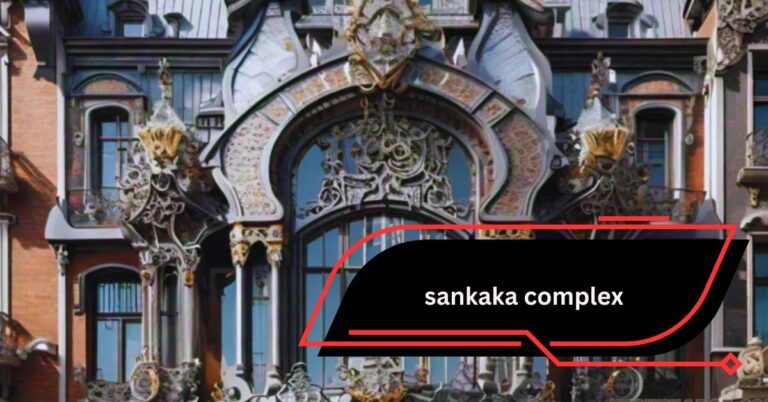Sankaku Complex is a name that many enthusiasts of Japanese pop culture, anime, manga, and gaming are familiar with. Operating as an online hub since its inception, the site has garnered a reputation for its diverse, sometimes controversial content. A blend of entertainment news, anime reviews, fan art, memes, and discussions related to the anime and manga world, Sankaku Complex has both passionate supporters and vocal critics. In this article, we’ll dive into the essence of Sankaku Complex, its place in the internet community, and its broader cultural impact.
Origins and Purpose
Founded in the late 2000s, Sankaku Complex was designed to cater to the growing interest in Japanese otaku culture. The term “otaku” is often used to describe individuals with intense interest in subjects like anime, manga, video games, and other related media. As the global appreciation for these industries expanded, Sankaku Complex provided a platform where enthusiasts could engage with a wide array of content, from the latest anime reviews to fan discussions about trending manga series.
The site’s unique mix of anime news and community-driven content quickly attracted a devoted audience. Unlike more formal news outlets, Sankaku Complex adopts an irreverent tone and offers content that spans the quirky, humorous, and sometimes risqué. This combination set it apart, particularly for an audience that was seeking something outside the conventional bounds of pop culture news sites.
Content and Features
Sankaku Complex offers a broad variety of content that appeals to different segments of the anime, manga, and gaming community. Some of its key sections include:
- Anime and Manga News: The site regularly updates its readers on the latest news in the world of anime and manga, including announcements about new series, reviews of the latest episodes, and updates about popular franchises. Sankaku Complex also covers more niche areas of the industry, often bringing attention to works that might fly under the radar of more mainstream outlets.
- Gaming News: Video games, especially those from Japanese developers, form a crucial part of the site’s appeal. Reviews, news, and commentary on games like “Final Fantasy,” “Persona,” and other JRPGs (Japanese Role-Playing Games) are frequently featured. It also delves into the world of mobile gaming and visual novels, offering commentary on the ever-evolving landscape of Japanese and international gaming.
- Fan Art and Memes: One of the aspects that keeps Sankaku Complex vibrant is its active community of users who contribute fan art, memes, and various creative works. These user-generated contributions create an interactive experience for the site’s visitors, allowing them to share their passion for anime and manga through artistic expressions.
- Opinion Pieces: Sankaku Complex isn’t shy about featuring provocative opinion pieces that often challenge mainstream opinions. These editorials are popular for their candid commentary on everything from censorship in the anime industry to the evolution of certain tropes in manga storytelling.
- NSFW (Not Safe for Work) Content: One of the site’s most controversial aspects is its NSFW content. Sankaku Complex hosts a considerable amount of risqué material, often in the form of suggestive fan art, adult content related to anime, or commentary on fan service in certain shows. This has been a dividing point for its audience—while some see it as an authentic reflection of certain aspects of otaku culture, others criticize the site for leaning too heavily into controversial content.
Community Engagement and Discussion
A major feature of Sankaku Complex is its active user base. The comment sections are often filled with spirited debates, ranging from light-hearted banter to serious discussions about anime culture, censorship, and the impact of trends on the industry. Unlike more polished or corporatized websites, Sankaku Complex allows for a certain level of raw engagement, which appeals to users who want an unfiltered platform to express their opinions.
The platform’s forum-like structure allows users to post and discuss topics, making it a place where communities form around shared interests. Whether it’s discussing the latest episode of a popular anime, sharing fan theories, or debating the merits of a game mechanic, the community aspect of Sankaku Complex keeps it lively and engaging.
Controversies and Criticism
Despite its popularity, Sankaku Complex has not been without its controversies. The site’s inclusion of NSFW content, as well as its often provocative editorial tone, has drawn criticism from both outside and within the anime community. Critics argue that the site perpetuates negative stereotypes about otaku culture, especially regarding its portrayal of women in anime and the normalization of fan service.
Censorship is another hot-button issue frequently discussed on Sankaku Complex. The site often highlights instances where anime or games have been censored either by the Japanese government or by international distributors. Sankaku Complex’s editorial stance tends to be critical of such censorship, reflecting the site’s overall embrace of free expression, even when that expression enters controversial territory.
In addition, the site’s handling of user-generated content, particularly in its forums and comments sections, has sometimes resulted in problematic discussions or content being featured, further stoking the flames of criticism. Opponents argue that Sankaku Complex should take more responsibility in moderating content to avoid perpetuating harmful narratives or fostering toxic communities.
Cultural Impact and Longevity
Despite these criticisms, Sankaku Complex remains a significant player in the anime and otaku culture sphere. The site’s unapologetic embrace of all things anime—both the celebrated and the controversial—has created a loyal following. It provides an alternative to more sanitized or mainstream outlets, catering to a niche audience that appreciates the site’s unique voice.
The cultural impact of Sankaku Complex can be seen in how it bridges Japanese and international fans. It offers insight into niche parts of the anime and manga industries that may not receive attention elsewhere, thus broadening its users’ understanding of the medium. In addition, the site’s spotlight on fan works and its interactive community has given users a space to showcase their passion for anime, manga, and games.
Furthermore, Sankaku Complex’s often critical stance toward censorship has resonated with a portion of the community that values creative freedom, even when that freedom treads into uncomfortable areas. By pushing boundaries and not shying away from controversial topics, Sankaku Complex has maintained relevance in an ever-changing digital landscape.
The Future of Sankaku Complex
As anime and manga continue to grow in popularity worldwide, Sankaku Complex is likely to remain a prominent voice in the community. Its willingness to cover both the mainstream and niche aspects of otaku culture ensures that it has a place among the dedicated fan base.
However, the site’s future success will depend on how it adapts to the evolving demands of the community and the internet at large. Issues like content moderation, balancing the demand for NSFW material with broader appeal, and navigating the ever-present specter of censorship will continue to shape the direction of the site.
Conclusion
Sankaku Complex is more than just an anime news site—it’s a cultural hub where otaku from around the world can come together to discuss, debate, and share their love for Japanese pop culture. While it may not be everyone’s cup of tea due to its often controversial content, it has undeniably left its mark on the anime community. With its unique blend of news, opinion pieces, and fan engagement, Sankaku Complex continues to be a dynamic and influential presence in the world of anime, manga, and gaming.

